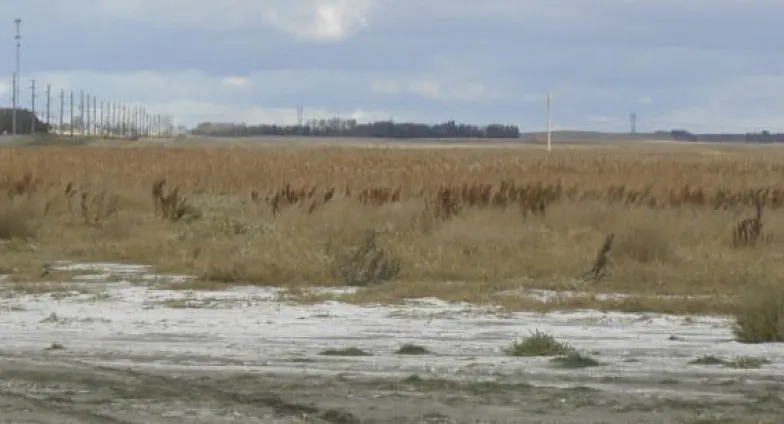Soil Salinity
Over 90% of producers in North Dakota are experiencing some sort of reduced productivity as a result of salinity
Soluble salts are part of the soil chemistry in the Northern Great Plains. The salts are produced by the weathering of geologic materials in the region and have been naturally distributed throughout the profile as soils developed. These salts have continued to move throughout the soil profile based on climatic patterns and management practices.
What is the Difference between Saline and Sodic soils?
Saline and Sodic soils differ in soil chemistry and management strategies. It is important to preform correct soil analysis on your problem fields in order to properly manage and reclaim theres areas. Make sure to included soluble salt analysis and percent Sodium ( %Na ) analysis on your soil samples. Below are example soil tests for saline, sodic, saline-sodic and a no salt issue field to give you an idea of what you are looking for.
The photos below are of saline and sodic fields in North Dakota. Can you tell the difference between the saline and sodic sites?

Soil Test Examples Provided by
Saline Soil |
Sodic Soil |

|

|

|

|
Saline-Sodic Soil |
No Salt Issue |
| Managing a saline-sodic soil is a balancing act. Start by managing the salinity by managing the water table. If you are able to lower the salinity level (less than 3 mmho/cm) then consider management options for sodic soils. If applying any kind of soil amendments – keep an eye on your soluble salt levels over time. |
If the soil test is low in both soluble salts and %Na, the field is not suffering from a salt issue. *Keep in mind* If you are composite soil sampling salt problems will likely not be detected, and the field will look “normal”. ALWAYS sample a an area of poor productivity and a good area, for comparison, to determaine if salts are the problem. |

|

|
Additional Salinity Resources
Check out the video tab for up-to-date soil health videos!
|
|
|
|
